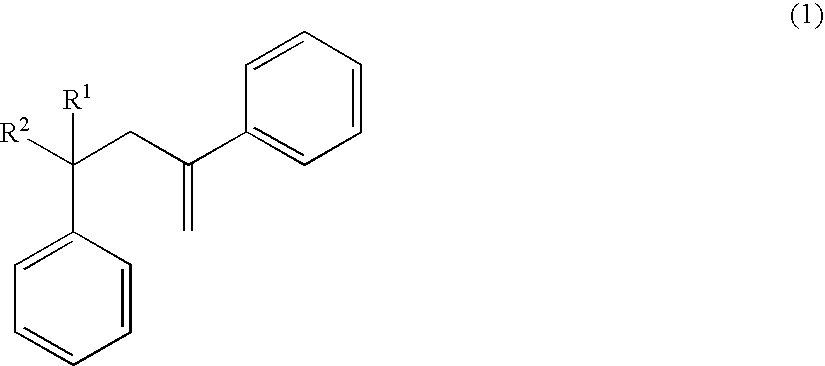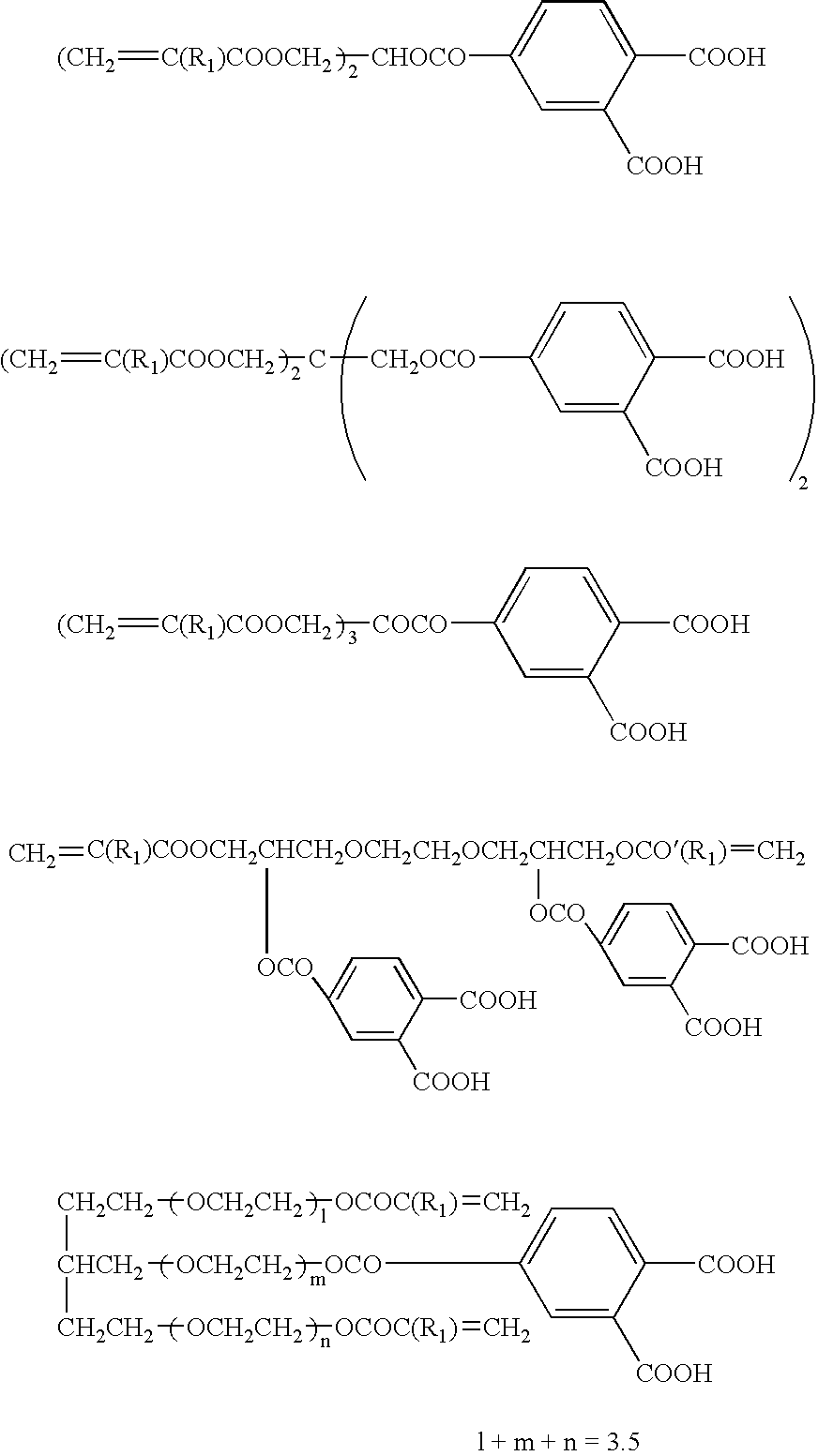Dental adhesive
- Summary
- Abstract
- Description
- Claims
- Application Information
AI Technical Summary
Benefits of technology
Problems solved by technology
Method used
Image
Examples
example 1
[0181]7 Parts by mass of PM, 13 parts by mass of PM2, 50 parts by mass of HEMA, 30 parts by mass of UDMA, 0.3 parts by mass of DEPT and 1 part by mass of Me—Me were mixed together to obtain liquid components in the form of a homogeneous solution.
[0182]Separately, 160 parts by mass of FASG, 70 parts by mass of SE-1, 3.5 parts by mass of BPO and 0.7 parts by mass of PBTEOA were mixed together to obtain powdery components in the form of a homogeneous powder.
[0183]The liquid components and the powder components were kneaded together at the above mass ratios until the mixture became homogeneous in order to evaluate the strength of adhesion to the tooth, curing time, removal possible time, b* of the cured body, and the compression strength of the cured body.
[0184]As a result, a large strength of adhesion to the tooth was obtained; i.e., strength of adhesion to the tooth of 7.6 MPa and strength of adhesion to the enamel of 10.2 MPa. The cure start time was 3.8 minutes, the cure end time wa...
examples 2 to 20
[0185]Physical properties were evaluated in the same manner as in Example 1 but changing the adhesive compositions as shown in Table 1. The evaluated results were as shown in Table 2.
PUM
| Property | Measurement | Unit |
|---|---|---|
| Temperature | aaaaa | aaaaa |
| Percent by mass | aaaaa | aaaaa |
| Percent by mass | aaaaa | aaaaa |
Abstract
Description
Claims
Application Information
 Login to View More
Login to View More - R&D
- Intellectual Property
- Life Sciences
- Materials
- Tech Scout
- Unparalleled Data Quality
- Higher Quality Content
- 60% Fewer Hallucinations
Browse by: Latest US Patents, China's latest patents, Technical Efficacy Thesaurus, Application Domain, Technology Topic, Popular Technical Reports.
© 2025 PatSnap. All rights reserved.Legal|Privacy policy|Modern Slavery Act Transparency Statement|Sitemap|About US| Contact US: help@patsnap.com



